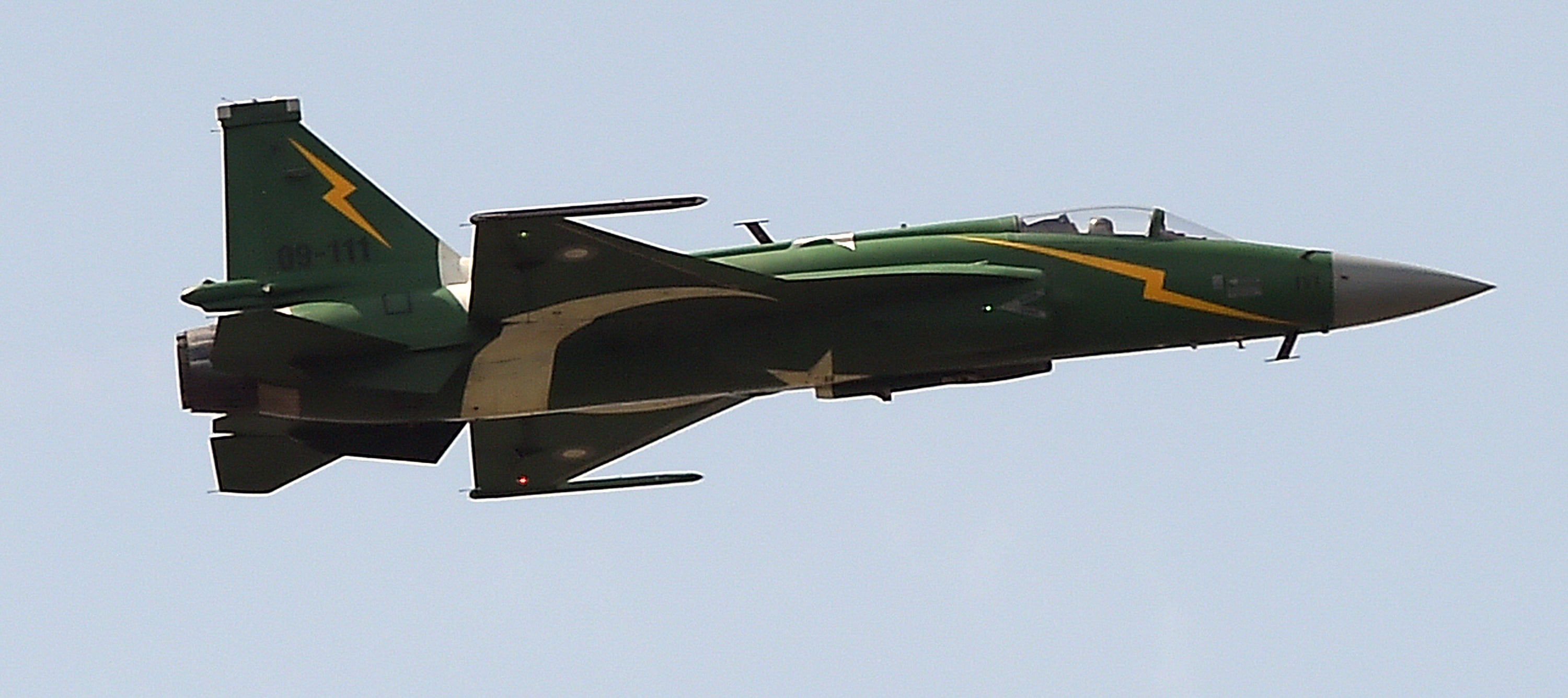ISLAMABAD — Argentina insists reports the country is buying the JF-17 Thunder warplane are premature, but analysts believe it could still succeed where other fighter types failed — mostly as a result of British pressure.
Speculation arose after media reports highlighted a request in Argentina’s fiscal 2022 draft budget for $664 million to purchase 12 JF-17s from Pakistan.
However, Argentina’s embassy in Islamabad told Defense News that “no final decision has been made, as there are five alternatives currently being assessed.” When asked to identify those contenders, the embassy responded: “We don’t have any information on those alternatives.”
Andrei Serbin Pont, the director of Argentinean think tank CRIES and a former adviser at the country’s Strategic Affairs Secretariat, said there’s been a history of such speculation. Argentina has previously “included funds for acquisition of aircraft in the budget, but the aircraft were not acquired. This occurred with Mirage F-1Ms and with Kfirs (canceled last minute in 2015),” he explained.
He believes the JF-17 is an attractive choice for Argentina because the aircraft is “out of reach of possible U.K. vetoing of parts, and at the same time it is the only new aircraft within the budgetary restraints of the Argentine Air Force.”
RELATED

The U.K. previously pressured suppliers to cancel deals with Argentina, or sabotaged them by embargoing critical British components. Britain has effectively maintained an arms embargo on Argentina since the 1982 Falklands War.
Over the past decade, the country pressured Spain to scrap a deal to supply surplus Mirage F1M fighters, and a deal for Kfir jets from Israel appears to have failed due to a combination of British pressure and American control of the aircraft’s J79 engines.
Britain also effectively vetoed the sale to Argentina of Brazilian license-built Swedish Saab Gripen and Korea Aerospace Industries FA-50 aircraft. And the U.K. stopped the return to Argentinian service of ex-French Super Etendard Modernisé strike aircraft by refusing to provide export clearance for British components.
However, the JF-17 can operate with solely Chinese subsystems, effectively making it immune from British pressure.
Still, Serbin Pont said, “the United States is making a push offering used F-16s, and another alternative being put on the table are modernized F/A-18s.”
“Although Mirage and MiG aircraft are still under consideration, these are the least likely to be selected,” he added.
Brazil-based defense analyst Alex Galante believes while “the Argentine government has a preference for the JF-17,″ it might be “awaiting a better offer from the U.S. or Russia.”
Added aerospace expert Justin Bronk of the Royal United Services Institute: “After other options have been repeatedly blocked or fallen through on finance grounds, the [JF-17] aircraft increasingly looks like the best option available.” But at this stage, he added, “any replacement fighter would be a potentially transformative boon for the Fuerza Aérea Argentina [Air Force] after more than a decade of unsuccessful attempts to replace its Mirage III and V fleets.”
Britain’s diplomatic post in Pakistan did not respond to Defense News about how the European country might react to a JF-17 sale, but aerospace expert Douglas Barrie, at the London-based International Institute for Strategic Studies, suspects Britain is closely watching the procurement effort because of the aircraft’s weapons package.
“While the JF-17/FC-1 as a platform has only modest combat aircraft characteristics, some of the Chinese air-to-air and air-to-surface missiles that are being or are already integrated on the aircraft are capable, notably the PL-10 short-range IIR AAM and the PL-12 active-radar-guided AAM,” Barrie said. “The medium-range C-802 anti-ship missile has also been seen on development aircraft.”
But Bronk pointed out that the JF-17 has “limited range while carrying such weapons, especially in the context of Argentina’s extensive land and maritime territory.”
“It also remains to be seen whether the Fuerza Aérea Argentina would be able to sustain a decent serviceability rate with the JF-17, if delivered, as recent decades have not been kind to the FAA in this regard.”
Argentina’s Air Force has struggled to replace aging aircraft and maintain offensive capabilities, having retired nearly all its front-line combat aircraft, save for some A-4AR Fightinghawk attack aircraft now supported by an even smaller number of IA-63 Pampa jet trainers.
The fourth-generation JF-17 is jointly developed and produced by China’s Chengdu Aerospace Corp. and the Pakistan Aeronautical Complex, the latter of which produces 58 percent of the airframe and undertakes final assembly. The latest Block III variant, in production for Pakistan and being offered to Argentina, features a range of improvements, including an active electronically scanned array radar, plus the choice of a Chinese WS-13 engine rather than the Russian RD-93 that powered the first two variants and those in Pakistani service.
Usman Ansari is the Pakistan correspondent for Defense News.








